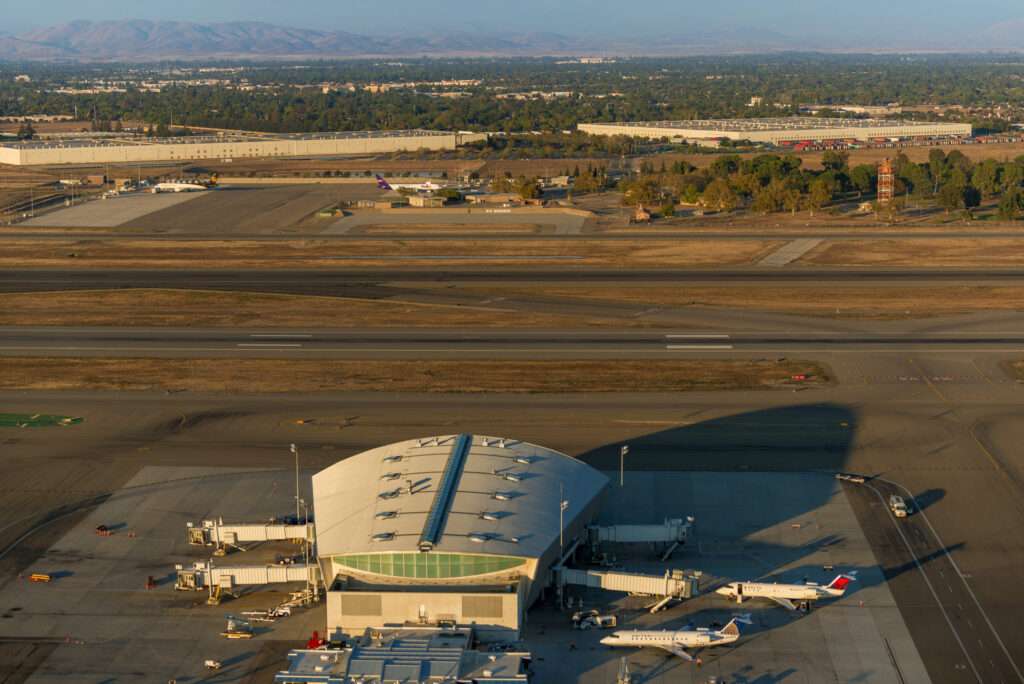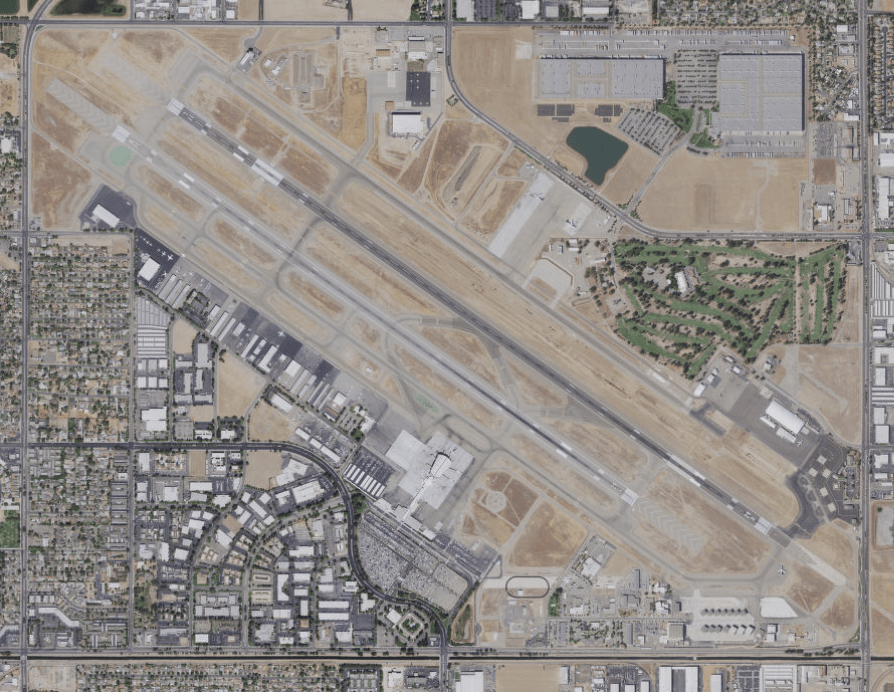Fresno Yosemite International Airport (FAT), nestled in California‘s San Joaquin Valley, boasts a rich history intertwined with both military service and commercial aviation.
Its journey began during World War II, transitioned to accommodate a growing region, and ultimately became a key access point for some of the nation’s most breathtaking natural wonders.
Taking Flight: The Early Years as Hammer Field (1942-1949)
The year was 1942, and the world was embroiled in World War II.
Recognizing the need for a strategic airbase on the West Coast, the U.S. Army Air Corps selected a site near Fresno, California, for the construction of Hammer Field.
Named after Major General William Henry Hammer, a prominent figure in Army aviation, the facility was built with remarkable speed, opening its doors just six months later.
Hammer Field served a crucial role during the war, primarily as a training base for bomber crews.
B-17 Flying Fortresses and B-24 Liberators roared across the skies as pilots honed their skills before being deployed to combat zones.
The base also housed a prisoner-of-war camp, a stark reminder of the global conflict raging at the time.
Transition to Civilian Aviation: Fresno Air Terminal (1949-1967)
With the conclusion of World War II, the need for a dedicated military base in Fresno diminished.
In 1949, Hammer Field transitioned to civilian use, becoming the Fresno Air Terminal.
This marked a pivotal moment in the airport’s history, laying the groundwork for its future as a commercial aviation hub.
The early years of the Fresno Air Terminal were characterized by gradual growth.
Commercial airlines, such as United Airlines and Trans World Airlines (TWA), began offering scheduled passenger service.

This connected Fresno to major cities across the country.
The airport also saw the rise of general aviation.
Private aircraft took to the skies for business and leisure travel.
The Jet Age Arrives: Fresno Municipal Airport and Beyond (1967-Present)
The 1960s ushered in a new era of aviation, the jet age.
To accommodate larger, faster aircraft, the City of Fresno embarked on a significant expansion project.
In 1967, the facility was renamed Fresno Municipal Airport and boasted a brand new terminal building.
This was designed to handle the growing passenger volume at that time.
The arrival of jetliners like the Boeing 737 and the Douglas DC-9 opened up new opportunities for travel.
Airlines expanded their routes, offering direct connections to major hubs like Los Angeles, San Francisco, and Denver.
Fresno Municipal Airport became a vital transportation link for the San Joaquin Valley, facilitating business travel, tourism, and the movement of goods.
In 1982, recognizing the airport’s role as a gateway to Yosemite, Sequoia, and Kings Canyon National Parks, the facility was renamed Fresno Yosemite International Airport (FAT).
This change reflected the growing importance of tourism in the region and the airport’s role in connecting visitors to these natural wonders.
The past few decades have seen continued growth and development at Fresno Yosemite International Airport.
New airlines have joined the roster, offering passengers a wider range of travel options.
Additionally, the airport has undergone significant renovations and expansions, including the construction of a new concourse in 2009.
Today, Fresno Yosemite International Airport, California serves as a vital economic engine for the region.
It employs thousands of people directly and indirectly, contributing significantly to the local economy.
The airport also plays a crucial role in tourism, providing a convenient access point for visitors eager to explore the beauty of Yosemite, Sequoia, and Kings Canyon National Parks.
Looking Ahead: The Future of Fresno Yosemite International Airport
As Fresno Yosemite International Airport, California looks towards the future, several key trends are shaping its development.
The growing popularity of low-cost carriers is expected to continue, offering passengers more affordable travel options.
Additionally, the airport is exploring ways to become more sustainable, implementing initiatives to reduce its environmental footprint.
The future of Fresno Yosemite International Airport is undoubtedly linked to the continued economic growth of the San Joaquin Valley and the enduring allure of Yosemite, Sequoia, and Kings Canyon National Parks.
As the airport continues to evolve, it will undoubtedly play a vital role in connecting people, businesses, and destinations for years to come.









